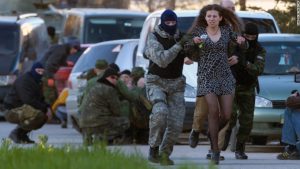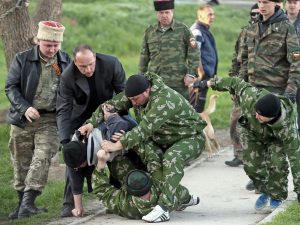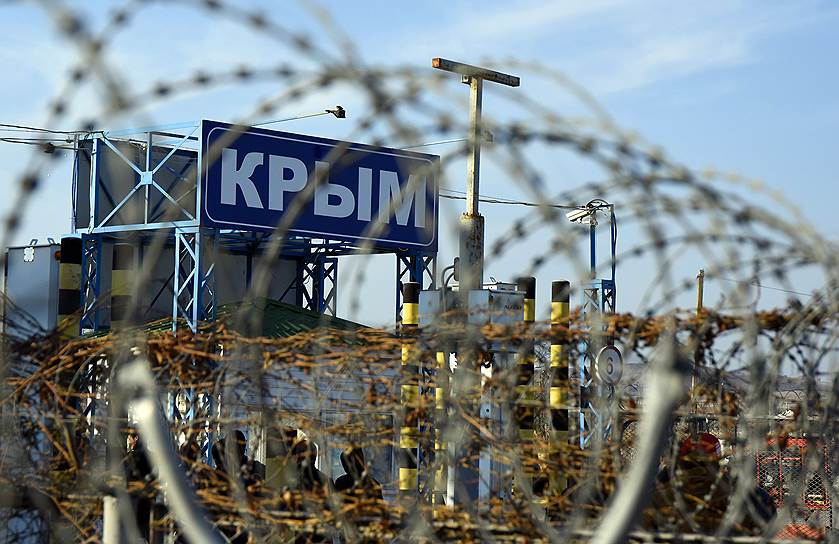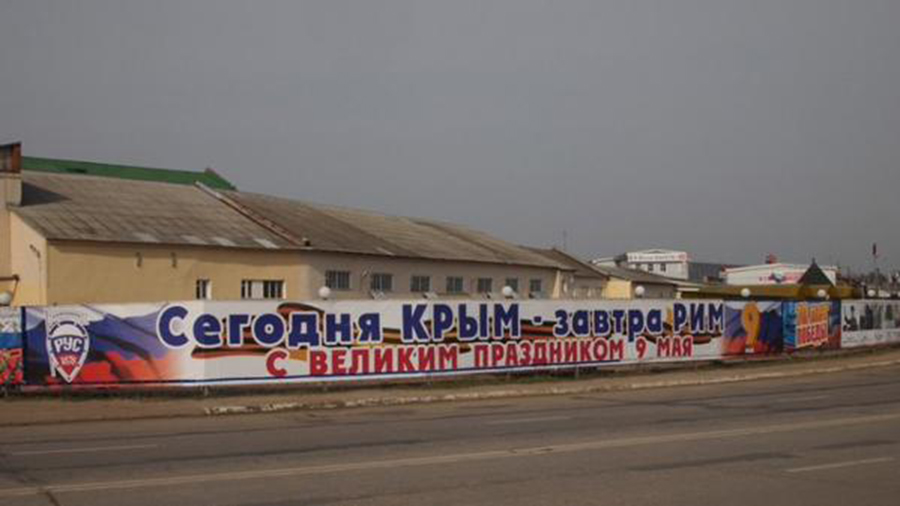Even as Moscow seeks to impose a civic national identity on the various nations of the Russian Federation, it is seeking to destroy the civic nation in occupied Crimea that Crimean Tatar leaders had promoted in the 1920s and that had become fully formed by the end of Soviet times, Vadim Shtepa says.
The regionalist theoretician stresses
that what happened in Crimea can happen elsewhere and thus his words on this point are especially important. He suggests that “the term ‘civic nation’ in principle goes beyond an ethnic format,” some few Russians accept given their fears about the terms “nation” and “nationality.”
“For me,” Shtepa says, “a civic nation is in the first instance the self-determination of the population of this or that territory. It is thus a political phenomenon.” And it exists when that population “proclaims itself a republic, adopts its own constitution and chooses a president.” When those things have happened, it is already “formed.”
Of course, he continues, that process must not be confused with what happens “when such a formation is created with the help of external force, as was the case in the so-called 'DNR' and 'LNR.' Here it is obvious that it is impossible to talk about any authentic existence of civic nations.”

But “the cases of Catalonia and Scotland are example of civic nations given that the Scots speak the very same language that residents of England to. For example, the Scots seek European integration, have already declared that they do not want to completely leave the EU and demand that their opinion be taken into account.”
By the 1970s, he says, people on the Ukrainian peninsula in fact “identified themselves not as abstract ‘soviet citizens,’ Ukrainians of Russians but precisely as Crimeans, especially those who were born there.” In 1991, they voted to make their region a republic once again, in 1992, they adopted a constitution and elected a president.
And it is “interesting,” the Russian regionalist says, “that this constitution was even more liberal than the one that existed at that time in Ukraine.” It declared that “Crimea is part of Ukraine” but must enjoy autonomy “approximately on the same level as the Republic Tatarstan does inside Russia.”

“Unfortunately,” Shtepa continues, “the Ukrainian authorities then annulled this constitution, and although the identification of Crimeans was preserved, there began to appear pro-Russian attitudes.” Had Kyiv not done so, “it would have been completely possible to integrate” Crimea into Ukraine, much as has been the case with the Aland Islands.
Those islands, Shtepa notes, “are an absolutely Swedish speaking region, but they belong to Finland and do not try to unite with Sweden. They have broad regional autonomy and understand perfectly well that the Swedes would never provide them something equivalent.”
Had Ukraine done the same for Crimea, “separatist attitudes there would never have arisen.”
Given that, Shtepa says, Kyiv right now should begin “an intensify information campaign” in Crimea, “showing the possibilities of a joint future” and “promise investments, European integration, and an end to sanctions,” thereby undercutting “false Russian propaganda.”
Ukrainians shouldn’t fear Crimean autonomy, he concludes. Instead, they should recognize that it was “the suppression of regional autonomy” which “created fertile group for the growth of separatist attitudes.”
Related:
- A Trump-Putin deal on Crimea could trigger a much bigger war, Israeli analyst says
- Crimea, and why Ukraine could not support Israel
- "Convicted" Crimean prisoners will be sent to correctional labour centres in Russia
- UN officially recognized Russia as an occupying power in Crimea
- Russian occupier of Crimea threatens to repeat one of Stalin's most barbaric acts in 1944
- Expert community outraged over new FSB arrests in Crimea
- Russia bans Crimean Tatars by banning the Mejlis
- Don't forget those kidnapped in occupied Crimea





